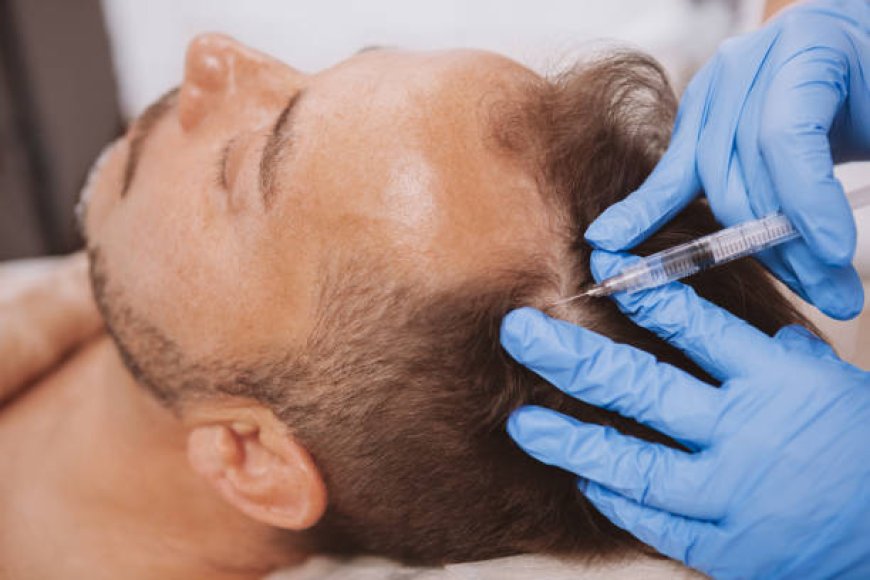How to Choose Alopecia Areata Treatment in Abu Dhabi

Alopecia areata treatment in Abu Dhabi, an autoimmune condition leading to hair loss, can be challenging to manage. Choosing the right treatment is crucial for effective management and achieving the best results. In Abu Dhabi, where numerous treatment options are available, making an informed choice involves considering several factors. This guide will help you navigate the decision-making process to select the most suitable alopecia areata treatment.
Understanding Your Options
Before choosing a treatment, it’s essential to understand the different options available. Each treatment has its benefits, limitations, and suitability based on the severity and extent of your condition.
1. Topical Corticosteroids
Topical corticosteroids are often the first-line treatment for alopecia areata. They work by reducing inflammation and suppressing the immune system’s activity around the hair follicles.
Benefits:
- Easy to use at home.
- Generally affordable.
Considerations:
- May take several weeks to show results.
- Potential side effects include skin irritation.
2. Minoxidil (Rogaine)
Minoxidil is an over-the-counter topical solution that stimulates hair growth and is used to treat various types of hair loss, including alopecia areata.
Benefits:
- Widely available and relatively cost-effective.
- Can be used alongside other treatments.
Considerations:
- Results can vary, and continuous use is required to maintain regrowth.
3. Intralesional Corticosteroid Injections
This treatment involves injecting corticosteroids directly into the affected areas. It’s effective for larger patches of hair loss.
Benefits:
- Targets the affected areas precisely.
- Often yields faster results.
Considerations:
- May require multiple sessions.
- Can be more costly and uncomfortable.
4. Platelet-Rich Plasma (PRP) Therapy
PRP therapy uses your own blood’s platelets to stimulate hair follicles and promote regrowth.
Benefits:
- Non-surgical and uses natural components.
- Effective for many patients.
Considerations:
- Higher cost compared to other treatments.
- Requires several sessions for optimal results.
5. Immunotherapy
Immunotherapy involves applying a chemical solution to the scalp to induce an allergic reaction, which can help stimulate hair regrowth.
Benefits:
- Can be effective for severe cases of alopecia areata.
- Generally affordable compared to advanced therapies.
Considerations:
- May cause allergic reactions or irritation.
- Effectiveness can vary and may take time.
Factors to Consider When Choosing a Treatment
When deciding on the best treatment for alopecia areata, consider the following factors:
1. Severity and Extent of Hair Loss
- Mild Cases: Topical corticosteroids or minoxidil may be effective.
- Severe Cases: Intralesional injections, PRP therapy, or immunotherapy might be necessary for better results.
2. Treatment Goals
- Quick Results: For faster results, intralesional injections or PRP therapy may be preferable.
- Budget-Friendly: Topical treatments and minoxidil are generally more affordable.
3. Potential Side Effects
- Tolerance: Consider your tolerance for potential side effects such as skin irritation or allergic reactions.
- Consultation: Discuss potential side effects with your dermatologist to understand the risks associated with each treatment.
4. Cost and Affordability
- Budget: Assess your budget and choose a treatment that aligns with your financial situation. Some treatments like PRP therapy may be more expensive but offer quicker results.
5. Expertise and Reputation of the Clinic
- Reputation: Choose a clinic with a good reputation and experienced specialists in alopecia areata treatments.
- Consultation: Schedule a consultation to discuss your options, understand the treatment process, and evaluate the clinic’s facilities.
Steps to Choosing the Right Treatment
-
Consult a Specialist: Begin with a consultation from a dermatologist or trichologist who specializes in hair loss. They can provide a diagnosis and recommend suitable treatment options based on your specific condition.
-
Evaluate Treatment Options: Discuss the pros and cons of each treatment option. Consider factors such as effectiveness, side effects, duration of treatment, and cost.
-
Consider a Personalized Plan: Work with your specialist to develop a personalized treatment plan that aligns with your goals and budget. They can help you choose a combination of treatments if necessary.
-
Check Reviews and Testimonials: Look for patient reviews and testimonials about the clinic and treatments. This can provide insights into the experiences of others and help you make a more informed decision.
-
Review Financial Options: Understand the cost of each treatment and explore payment options or financing plans if available. Ensure that you are comfortable with the financial commitment involved.












